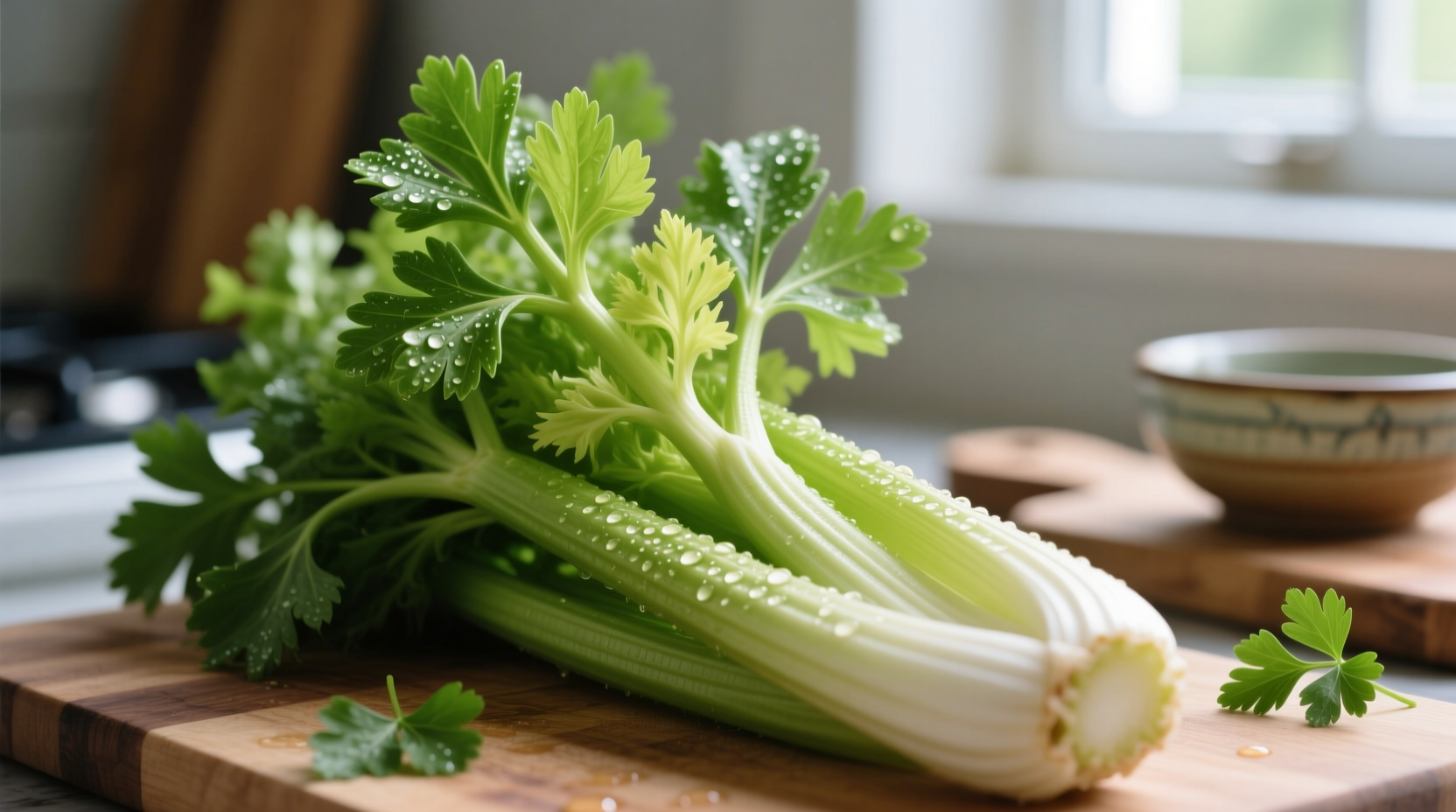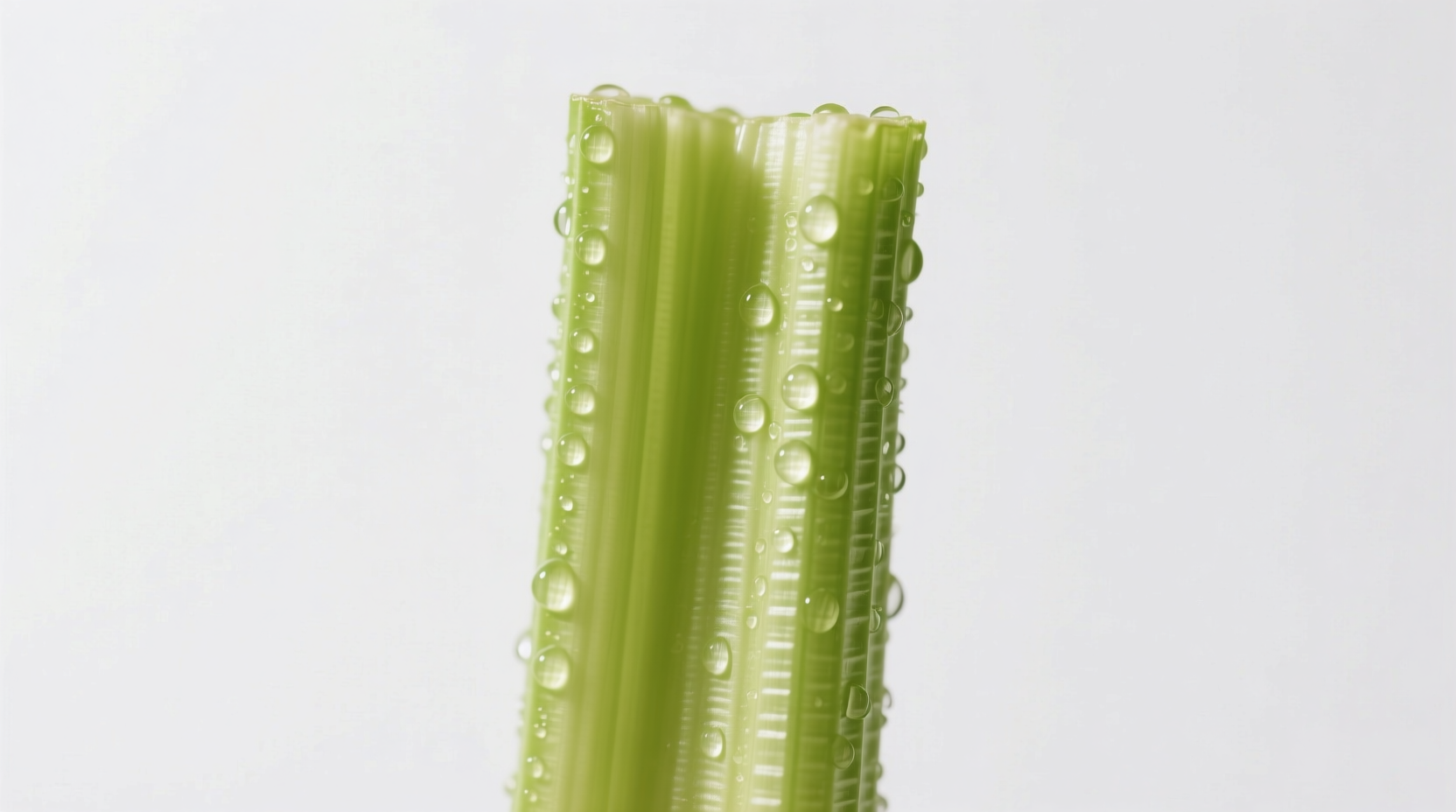Understanding celery anatomy clears up widespread confusion that's persisted for decades. When you purchase what's labeled as a “celery stalk” at the supermarket, you're actually getting a collection of individual stringy ribs bound together at the base. This terminology mix-up affects how home cooks select, prepare, and use this versatile vegetable.
Why the Celery Stalk Confusion Exists
The misunderstanding stems from regional language differences and inconsistent labeling practices. Botanically speaking, the entire curved structure that grows from the celery plant's base constitutes a single stalk. Each stringy segment within that structure is properly called a rib. This distinction matters when following recipes that specify “one stalk of celery.”
| Common Terminology | Botanical Terminology | What You're Actually Getting |
|---|---|---|
| “One stalk of celery” (grocery store) | One leafy structure (multiple ribs) | 8-12 individual ribs bound together |
| “Rib of celery” | Individual petiole | Single stringy segment with vascular bundles |
| “Celery heart” | Innermost tender ribs | 3-5 pale, crisp central ribs |
This terminology clarification comes from the University of Minnesota Extension's vegetable growing guide, which documents how regional language variations have created persistent confusion in home kitchens.
Identifying Quality Celery Stalks
When selecting celery at the market, look for these characteristics that indicate freshness and optimal flavor:
- Firmness: Stalks should snap crisply when bent, not bend limply
- Color: Vibrant pale green without yellowing or browning
- Leaves: Bright green, not wilted (though many stores remove leaves)
- Base: Compact and white, not splayed or mushy

According to the USDA FoodData Central database, peak season for celery in North America runs from late summer through early winter, when stalks contain optimal moisture content and flavor compounds.
Proper Storage Techniques for Maximum Freshness
Celery stalks lose crispness quickly without proper storage. Follow these evidence-based methods:
- Refrigerate immediately: Store in the crisper drawer at 32-36°F (0-2°C)
- Wrap in aluminum foil: This allows ethylene gas to escape while maintaining humidity
- Trim ends: Cut 1/4 inch from the base before storage to improve water absorption
- Store upright in water: Submerge base in 1-2 inches of water in a container
Research from the UC Davis Postharvest Technology Center shows these methods extend celery's shelf life to 3-4 weeks, compared to just 7-10 days with standard plastic bag storage.
Culinary Applications for Celery Stalks
Celery's unique flavor profile makes it indispensable in cooking. Understanding stalk anatomy helps maximize its potential:
Raw Applications
The outer ribs contain more fibrous tissue and stronger flavor, ideal for cooking. The inner ribs (celery heart) are more tender and mild, perfect for:
- Crudité platters with dips
- Salads and slaws
- Ants on a log (peanut butter-filled ribs)
Cooking Applications
When cooking, use the entire stalk structure for maximum flavor extraction:
- Mirepoix foundation: Combine diced outer ribs with carrots and onions
- Stocks and broths: Simmer whole stalks for flavor base
- Braising: Add whole ribs to pot roasts and stews
- Infusions: Steep in vinegar or oil for flavored condiments
Nutritional Benefits of Celery Stalks
Celery stalks offer more than just crunch. A single medium stalk (40g) provides:
- 6.5 calories
- 0.4g dietary fiber (2% daily value)
- 17mg potassium
- Trace amounts of vitamin K, vitamin C, and folate
The stringy vascular bundles contain valuable insoluble fiber that aids digestion. According to USDA nutritional analysis, celery's high water content (95%) makes it exceptionally hydrating while providing essential electrolytes.
Common Questions About Celery Stalks
Understanding celery anatomy helps answer frequent kitchen questions:
Why do celery stalks become limp?
Celery stalks lose crispness when moisture evaporates from their vascular bundles. Proper storage in high humidity environments prevents this dehydration. The University of California's postharvest research shows that maintaining 95-100% relative humidity preserves celery's turgor pressure.
How many individual ribs make up one celery stalk?
A typical grocery store celery stalk contains 8-12 individual ribs. The exact number varies by variety and growing conditions, with larger, mature plants producing more ribs per stalk structure.
Can you eat the leaves from celery stalks?
Yes, celery leaves are completely edible and packed with more flavor and nutrients than the ribs. Use them as herb garnishes, in pesto, or chopped into soups and stocks for enhanced celery flavor without adding extra bulk.
Why does celery sometimes taste bitter?
Bitterness occurs when celery experiences water stress during growth or improper storage. The outer ribs typically contain more bitter compounds than the inner heart. Blanching briefly in boiling water can reduce bitterness while preserving texture.
How do you prevent celery stalks from turning brown after cutting?
Submerge cut celery in ice water with a squeeze of lemon juice. The acid slows enzymatic browning while the cold temperature maintains crispness. For longer storage, vacuum sealing with minimal air exposure works best.











 浙公网安备
33010002000092号
浙公网安备
33010002000092号 浙B2-20120091-4
浙B2-20120091-4